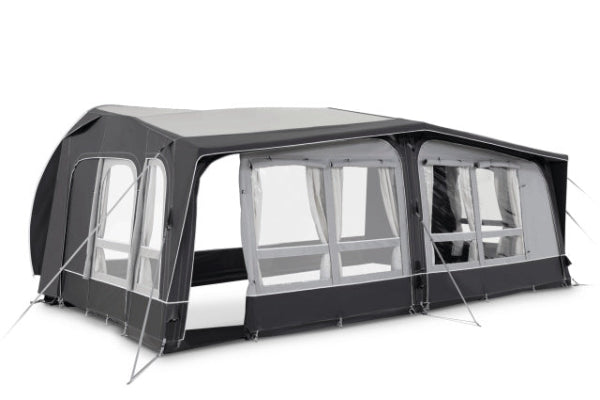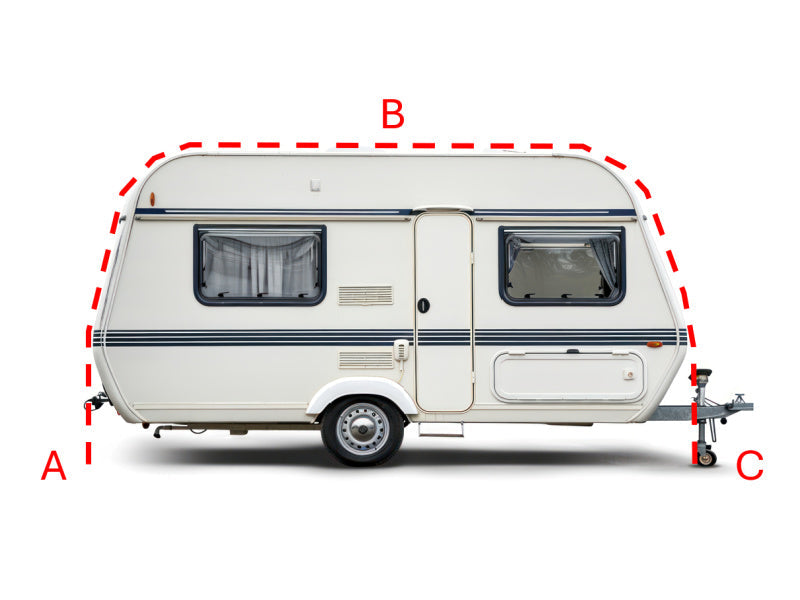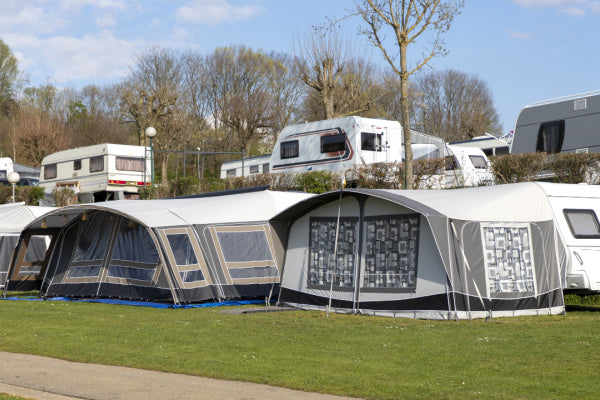EcoFlow vs Bluetti: Comparing Power Stations
Caught between EcoFlow and Bluetti for your next portable power station? Quick answer: EcoFlow for speed, Bluetti for muscle. But wait—what about solar smarts, off-grid life, or surviving your next blackout like a legend? Stick around—we're charging into the details (way faster than your old generator ever could).
Introduction to High-Performance Portable Power
Portable power stations have become essential in a world where blackouts, van life, and remote work are on the rise. Two names dominate the scene: EcoFlow and Bluetti. Both offer innovative solutions, but which one suits you best?
Let’s dive into the features, benefits, and limitations of each brand. This will help you make a confident, informed decision.

The Demand for Robust Power Solutions
The need for energy independence is more relevant than ever. People want power they can rely on, whether for camping, remote work, or emergencies.
Portable power stations have surged in popularity thanks to their clean energy, mobility, and ease of use. As solar tech improves, these stations become more efficient and accessible.
Why are portable power stations crucial for serious home backup and extended off-grid living?
Frequent power cuts and extreme weather have highlighted the need for reliable backup power. A good portable station keeps essentials running—fridges, phones, and medical gear—when the grid fails.
For those living off-grid or on the move, they offer freedom from sockets. No more depending on noisy, fuel-guzzling generators.
EcoFlow and Bluetti: A Head-to-Head Overview
Market positioning and core philosophies of each brand.
EcoFlow is known for innovation, sleek design, and rapid charging. Their X-Stream technology redefines how quickly you can top up.
Bluetti focuses on long-term reliability and expandability. Their systems grow with your power needs and are known for high capacity and rugged design.
Both brands share a commitment to sustainability. EcoFlow aims to minimise waste, while Bluetti prioritises recyclable materials and efficient manufacturing.
Deep Dive into Key Technical Specifications
Battery Chemistry and Lifespan
Both primarily use LiFePO4 battery technology; differentiate specific implementations or cell quality.
Both EcoFlow and Bluetti rely on Lithium Iron Phosphate (LiFePO4) chemistry. This ensures a longer lifespan and greater safety compared to older battery types.
While implementations vary slightly, Bluetti models often include larger capacities out of the box. EcoFlow tends to emphasise speed and efficiency in design.
Detailed cycle life comparison and long-term durability.
Bluetti typically offers up to 3,000+ charge cycles before dropping to 80% capacity. EcoFlow models hover around 2,500–3,000 cycles depending on usage.
This makes both suitable for long-term use, but Bluetti may edge out slightly in lifespan for heavy users.
Output Power and Storage Capacity
Comparison of Watt-hours (Wh) and continuous Watt (W) across comparable models (e.g., Delta series vs. AC/EP series).
EcoFlow’s Delta offers 1.26kWh with a peak output of 1800W. Bluetti’s AC200 delivers 2.048kWh and up to 2000W output.
If storage matters more, Bluetti leads. But for those who want lighter setups, EcoFlow holds its ground.
Surge capabilities and Pure Sine Wave inverter quality.
Both brands deliver pure sine wave inverters, ensuring smooth, appliance-friendly power. Surge capabilities are comparable across the ranges.
Bluetti may offer slightly higher peaks depending on the model, making it better for high-draw tools.
UPS functionality and switchover times.
EcoFlow’s switchover time is typically under 30ms. That’s great for sensitive electronics.
Bluetti also supports UPS use, although some users report a more noticeable delay. For mission-critical setups, check each model’s switchover specs.
While EcoFlow maintains a slight edge for plug-and-play UPS, Bluetti’s higher-end models now offer sub-20ms switchover as well.
Charging Performance and Methods
AC Wall Charging: EcoFlow's fast charging (X-Stream) vs. Bluetti's input methods.
EcoFlow’s X-Stream tech charges some models to 80% in under an hour. That’s significantly quicker than Bluetti, which may take up to 4.5 hours for a full charge. Bluetti’s charging speeds have improved - dual AC + solar inputs on some models bring it closer to EcoFlow’s fast-charging times.
However, Bluetti’s slower charge may result in longer battery longevity. It depends on what you prioritise.
Solar charging efficiency: MPPT controllers, maximum solar input, and parallel charging options.
Both brands use MPPT controllers for solar input. This allows them to maximise efficiency when charging via solar panels.
EcoFlow’s systems optimise solar intake automatically. Bluetti, meanwhile, often allows for higher solar input—handy for extended off-grid use.
EV charging compatibility (where applicable, for larger models).
High-end models like EcoFlow’s Delta Pro and Bluetti’s AC300 can work with EV infrastructure. Compatibility varies by region and adapter type, so check your local options before purchasing.
Design, Size, and Practicality
Footprint, weight, and stackability for home or RV setups.
EcoFlow’s River is lightweight and ideal for emergency bags or mobile setups. At 13.6kg, it's easy to carry.
Bluetti’s AC200 weighs 27.5kg but offers more power. It suits semi-permanent installs or van conversions where mobility isn’t a priority.
Build quality, materials, and cooling systems (fan noise).
Both brands use high-quality, heat-resistant materials. EcoFlow designs are modern and streamlined, with quieter fans.
Bluetti units feel more rugged. Some models may produce more fan noise under load, so consider placement if you value silence.
Advanced Features and Ecosystem Integration
Smart App Control and Monitoring
Comprehensive comparison of mobile app control features, real-time data, and customisation.
EcoFlow’s app is intuitive and offers real-time tracking, usage stats, and firmware updates. It's user-friendly even for beginners.
Bluetti’s app is packed with detail. It offers more granular control and insight but may feel complex to some users.
Expandability and Modular Design

Options for adding expandable battery packs for increased capacity.
EcoFlow’s Delta Max can be expanded with extra batteries up to 2.52kWh. Bluetti’s AC300 starts modular and can grow significantly with B300 packs.
Bluetti wins here if expandability is your top concern.
Integration with Smart Home Panels and other accessories.
EcoFlow offers a Smart Home Panel for automatic home backup. Bluetti has similar options, but integration may require a more DIY approach depending on your setup.
Connectivity and Port Options
Variety of AC, DC, USB-A, USB-C, and RV ports.
Both brands offer a wide range of ports. EcoFlow includes USB-A, USB-C, car outputs, and multiple AC sockets.
Bluetti offers all of these and often includes 12V regulated outputs and RV-ready ports for mobile use.
Real-World Applications and Best Fit
Ideal for Home Backup and Energy Independence
Which brand offers a more robust home energy backup solution?
Bluetti leads with higher capacity and modularity. For serious home backup needs, it’s a stronger choice.
EcoFlow is faster and simpler, ideal for rapid-deployment or urban dwellers who want plug-and-play backup.
Suited for RV, Van Life, and Off-Grid Cabins
Balancing capacity, charging, and system integration for mobile living.
EcoFlow’s River or Delta series are compact, ideal for mobility. Bluetti is bulkier but delivers more stored power—better for long stays or larger off-grid setups.
Performance for Heavy-Duty Tools and Appliances
Bluetti’s AC and EP series are perfect for construction tools or large appliances. EcoFlow models can handle similar loads, but Bluetti tends to maintain performance over longer durations.

Value Proposition and Customer Experience
Pricing Strategy and Cost-Effectiveness
Price points across different tiers and value for money.
EcoFlow Detla 2 Max: £1,599 for 2048Wh
Bluetti AC200P: £1,199 for 2048Wh
EcoFlow offers excellent speed and portability per pound spent. Bluetti gives you more Wh for your money.
Warranty and After-Sales Support
Warranty periods and general perception of customer service.
Both offer two-year warranties. EcoFlow is known for fast responses in the UK.
Bluetti’s support is well-documented, though some users have experienced longer wait times for issue resolution.
Conclusion: Your Power Partner for Serious Demands
Final Considerations for Your Purchase
Weighing features, budget, and specific application needs.
If you want speed, compactness, and smart features, EcoFlow is for you. If you need power, scale, and long-term off-grid reliability, go with Bluetti.
The best choice depends on how and where you’ll use it.
What's Next in Portable Power Innovation?
Expect improvements in EV compatibility, AI-based energy management, and deeper smart home integration. EcoFlow and Bluetti continue to innovate—and your power options are only getting better.
Other content you might like:
- EcoFlow vs Jackery
- EcoFlow vs Jackery vs Bluetti
- EcoFlow vs Anker
- EcoFlow vs AllPowers
- EcoFlow vs Bluetti vs Anker
- EcoFlow vs Victron
- EcoFlow Delta Pro vs Delta Pro 3
- EcoFlow Delta Pro vs Delta 2 Max
- EcoFlow Delta Pro vs Bluetti AC300
- EcoFlow Delta Pro 3 vs Anker Solix F3800
- EcoFlow Delta Pro 3 vs Ultra
- EcoFlow Delta Pro vs Jackery 2000 Plus
- EcoFlow Delta Pro vs Max





Leave a comment